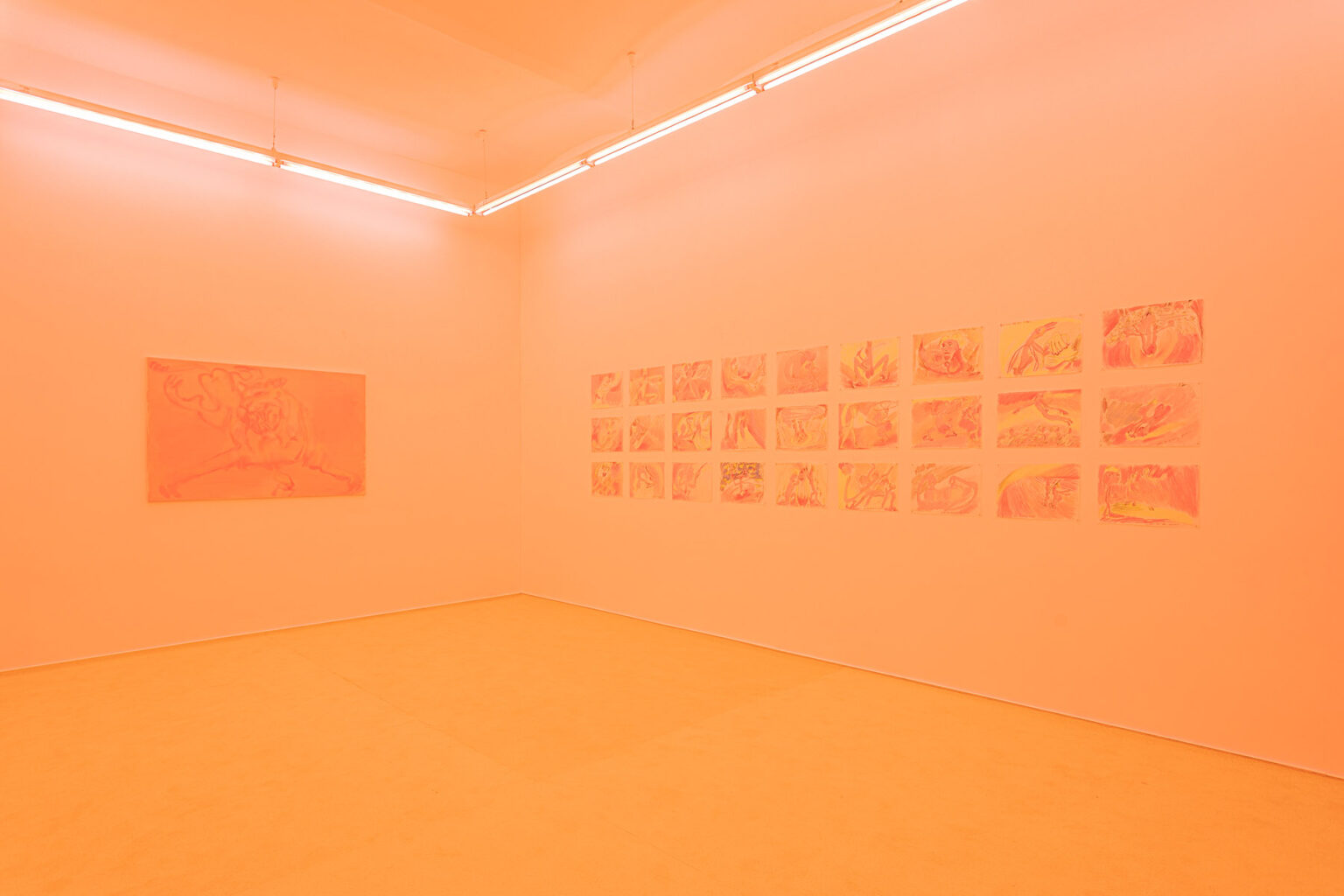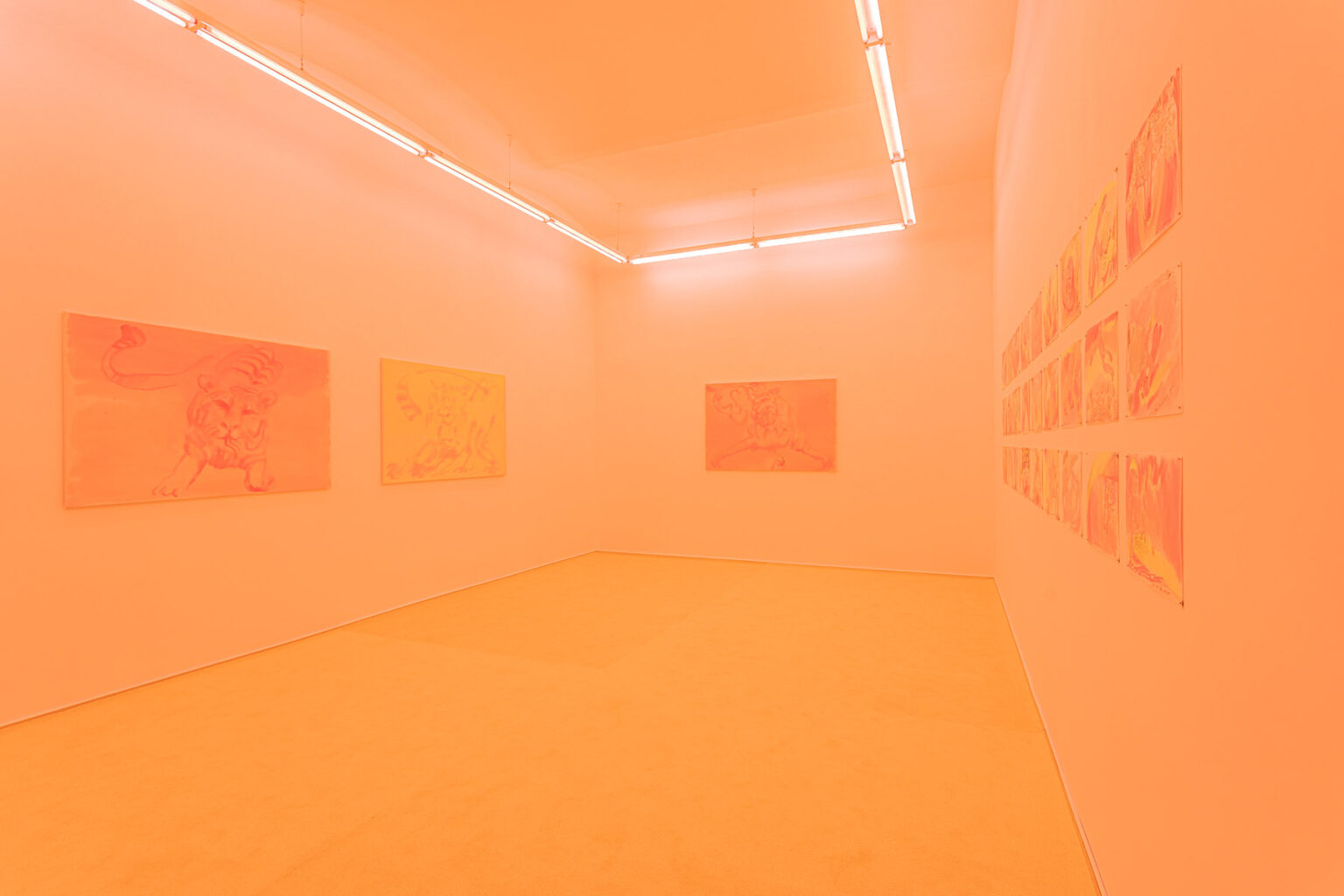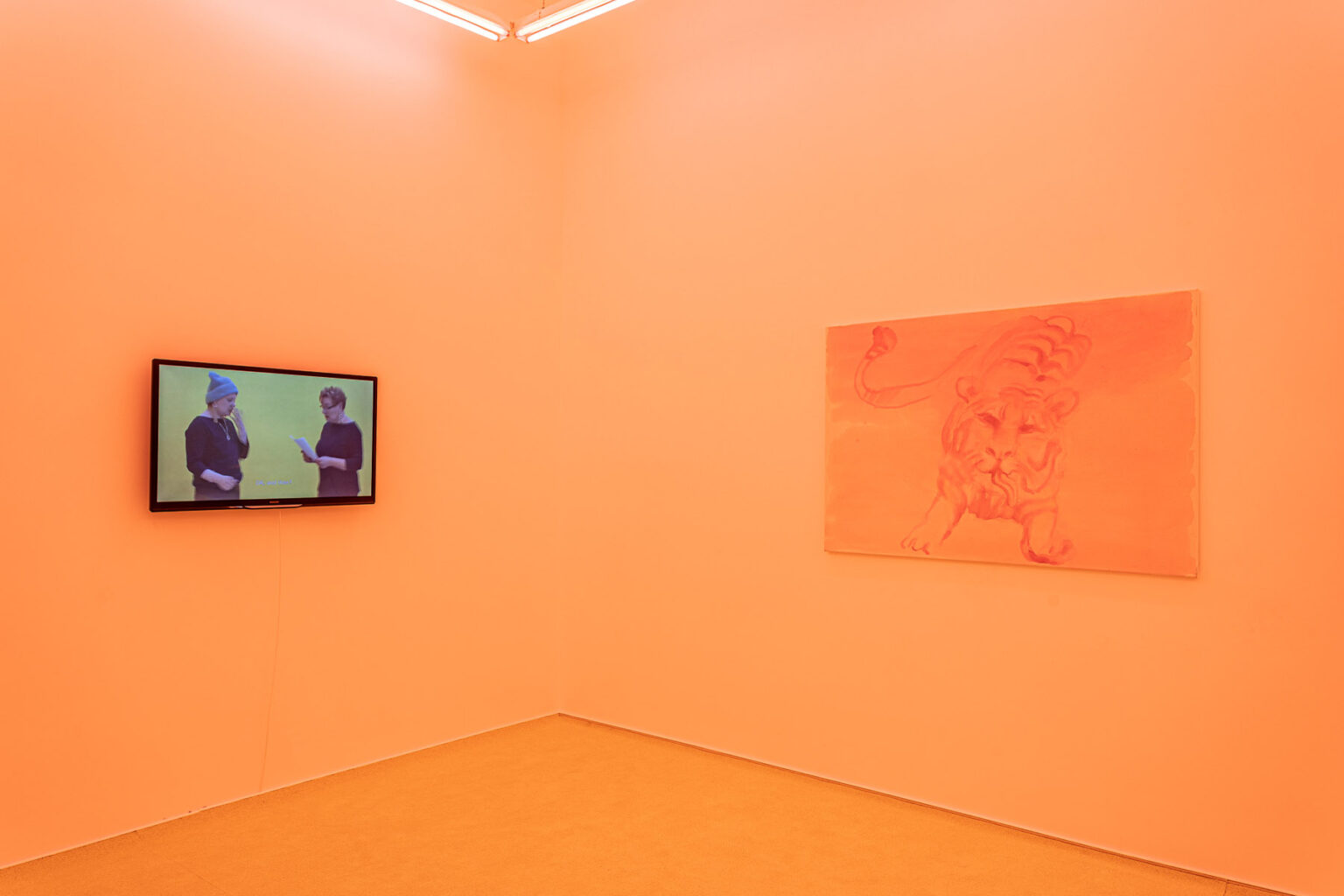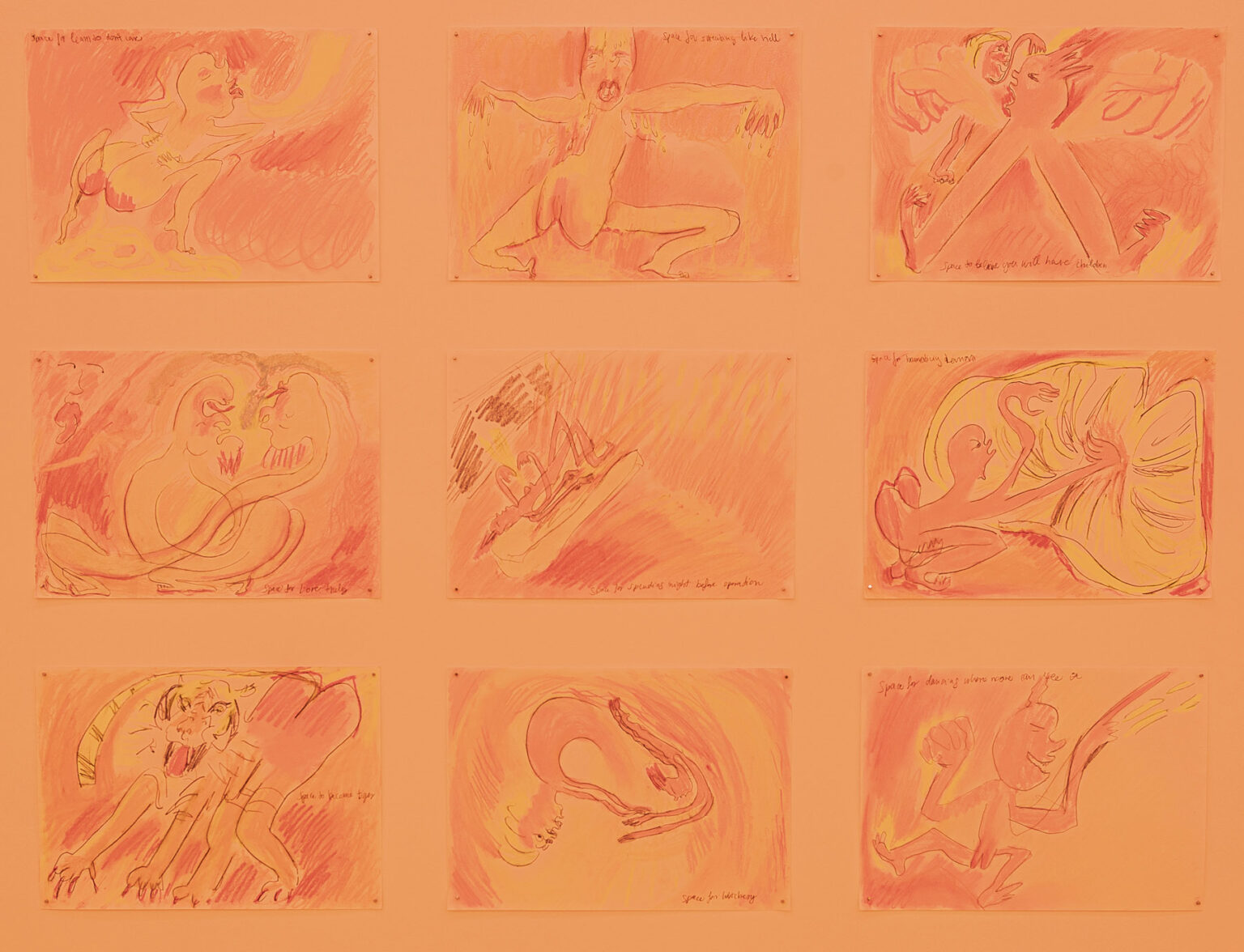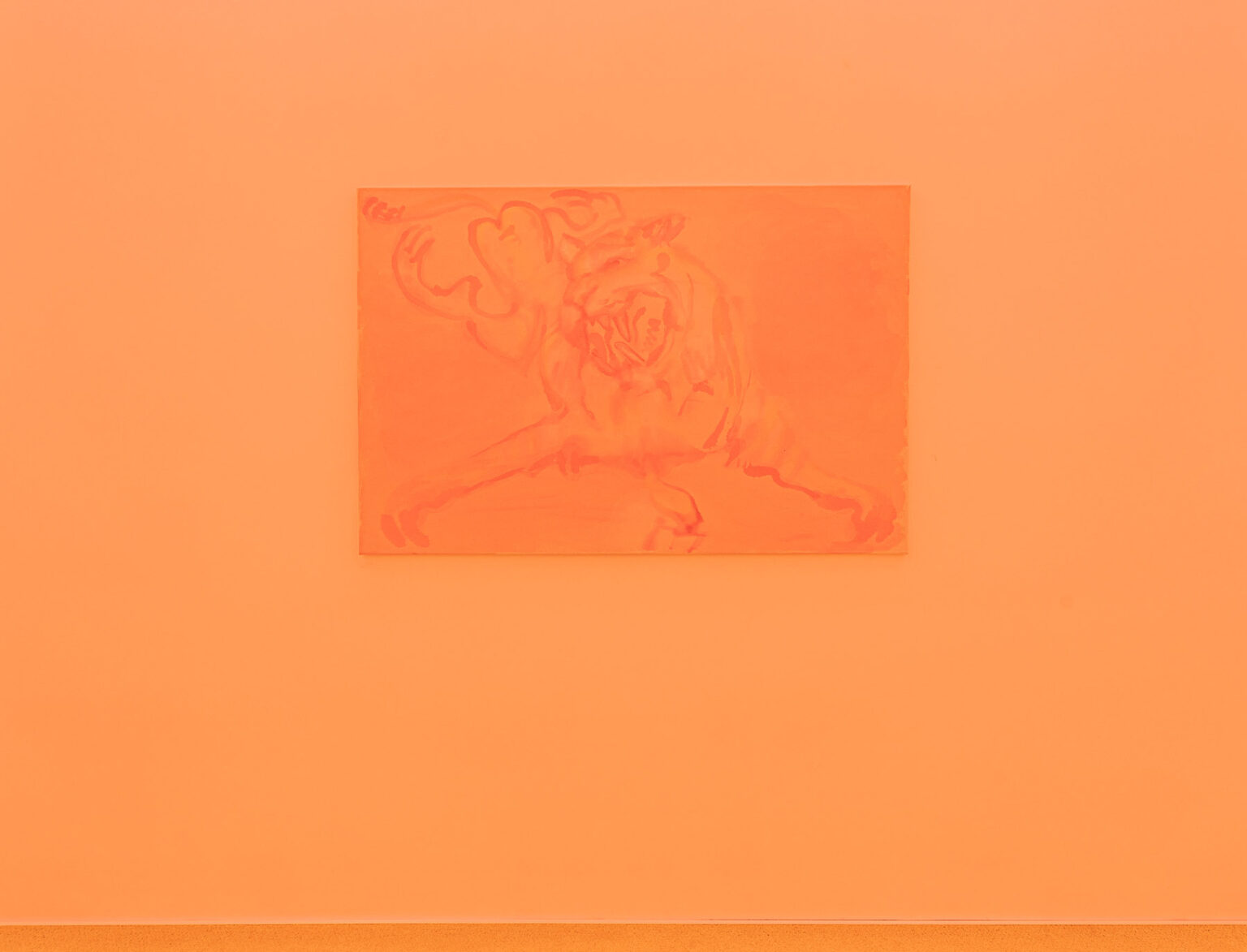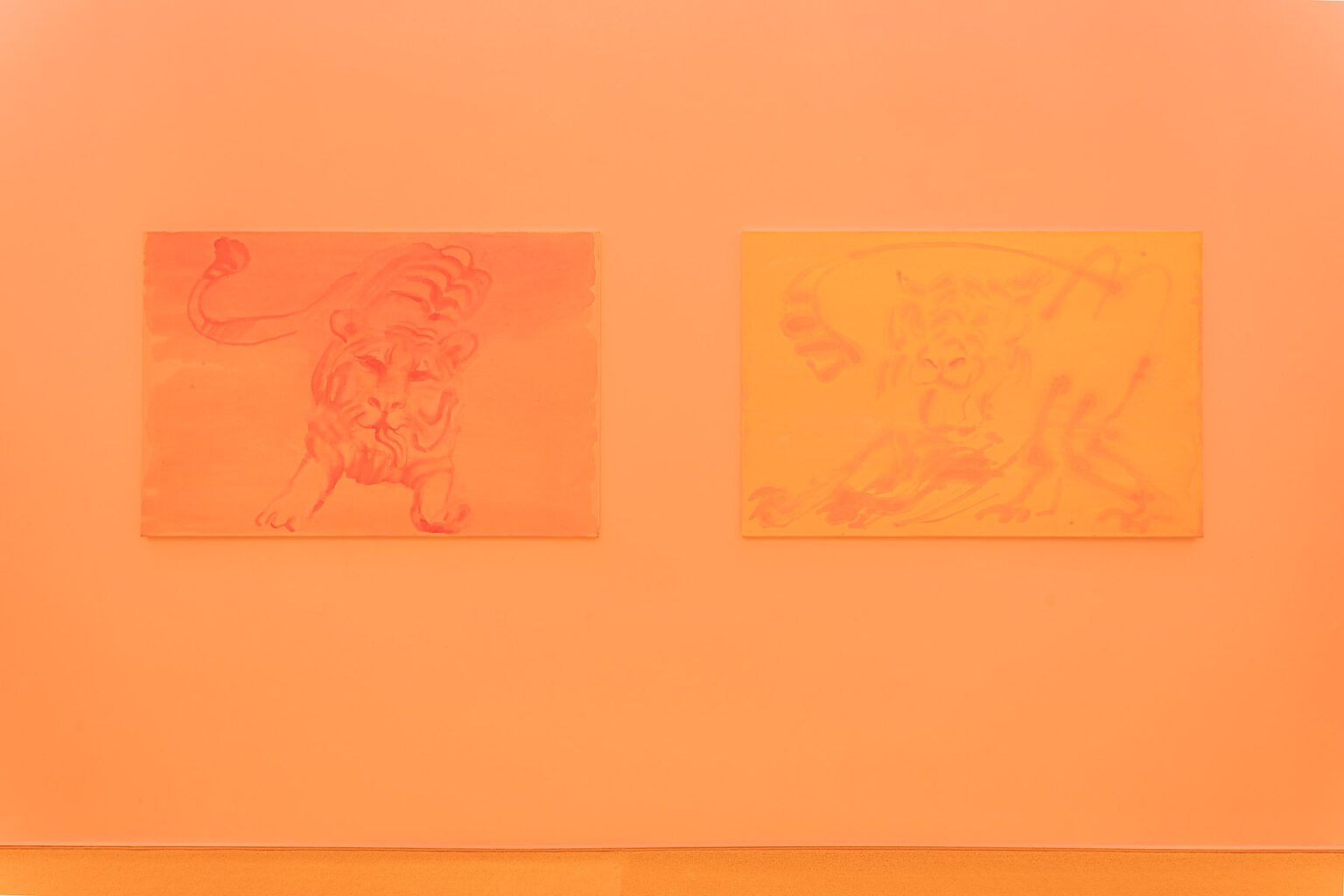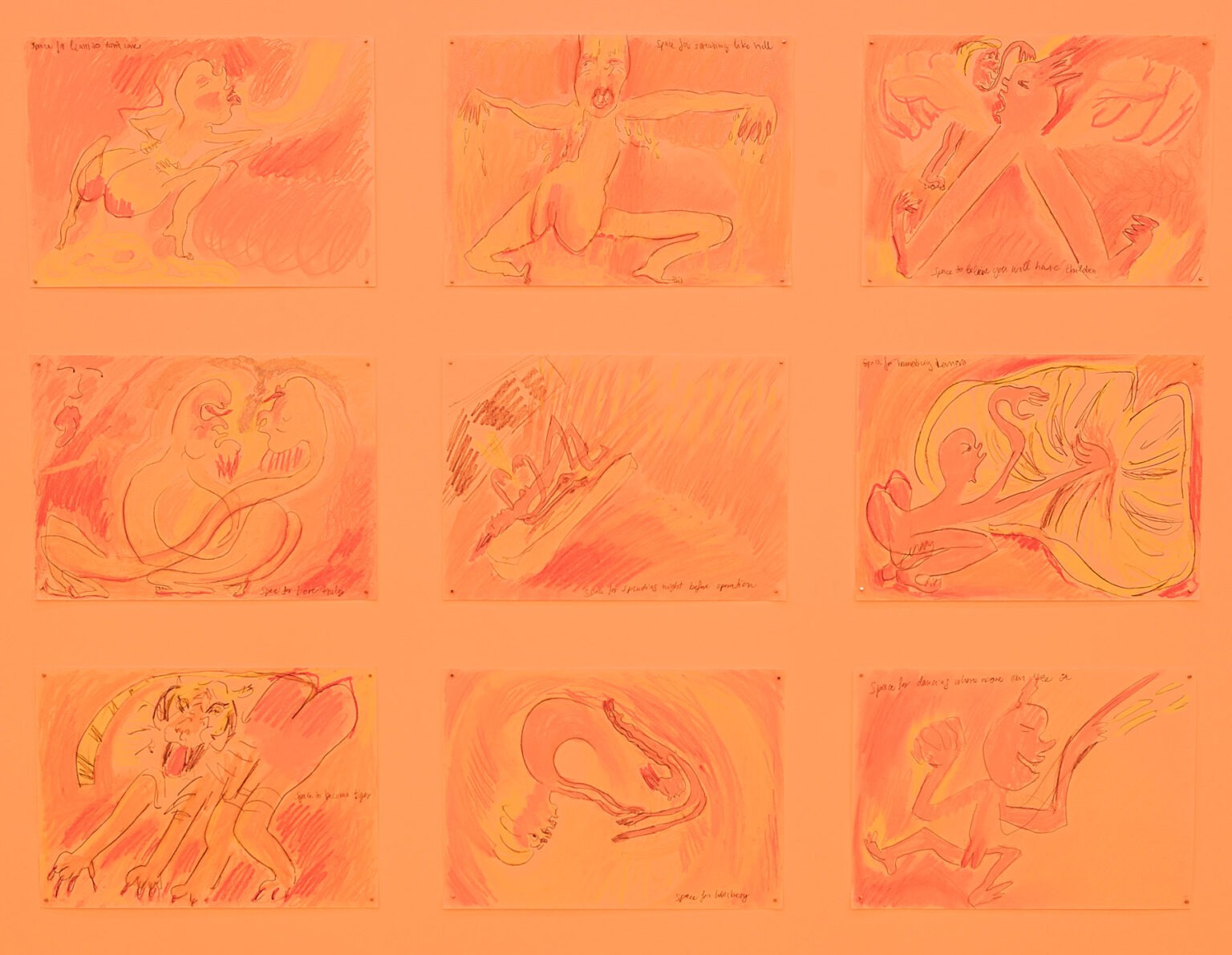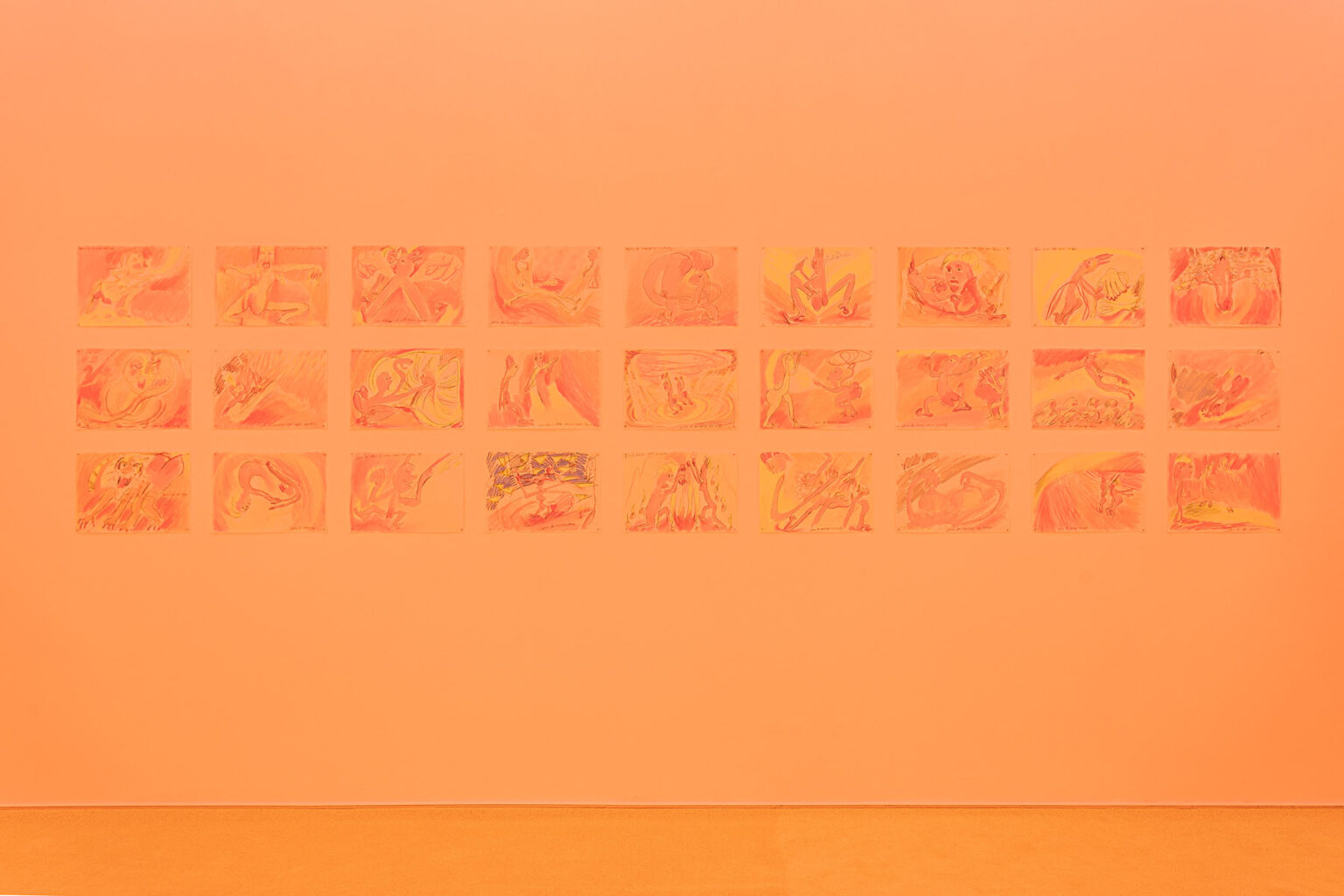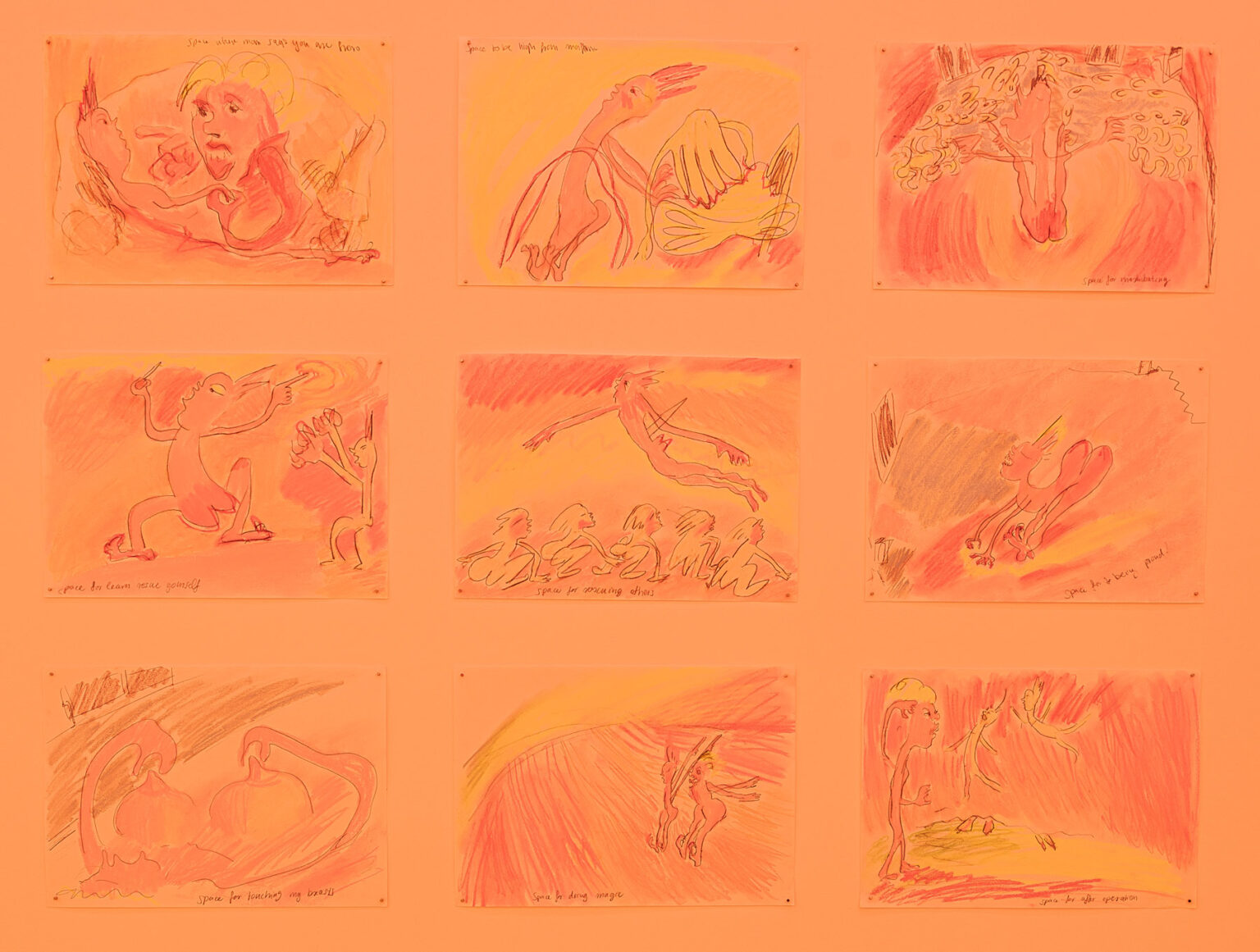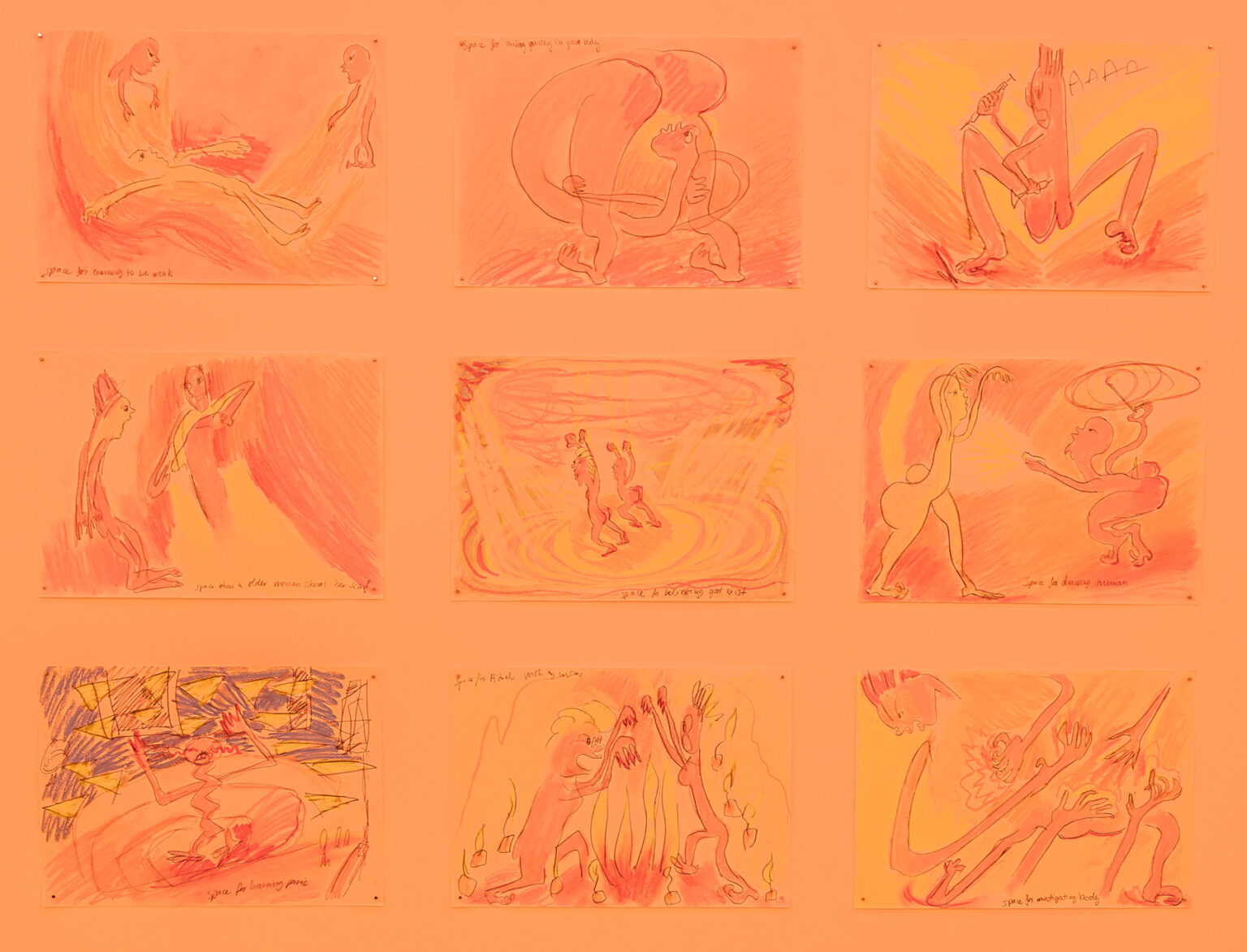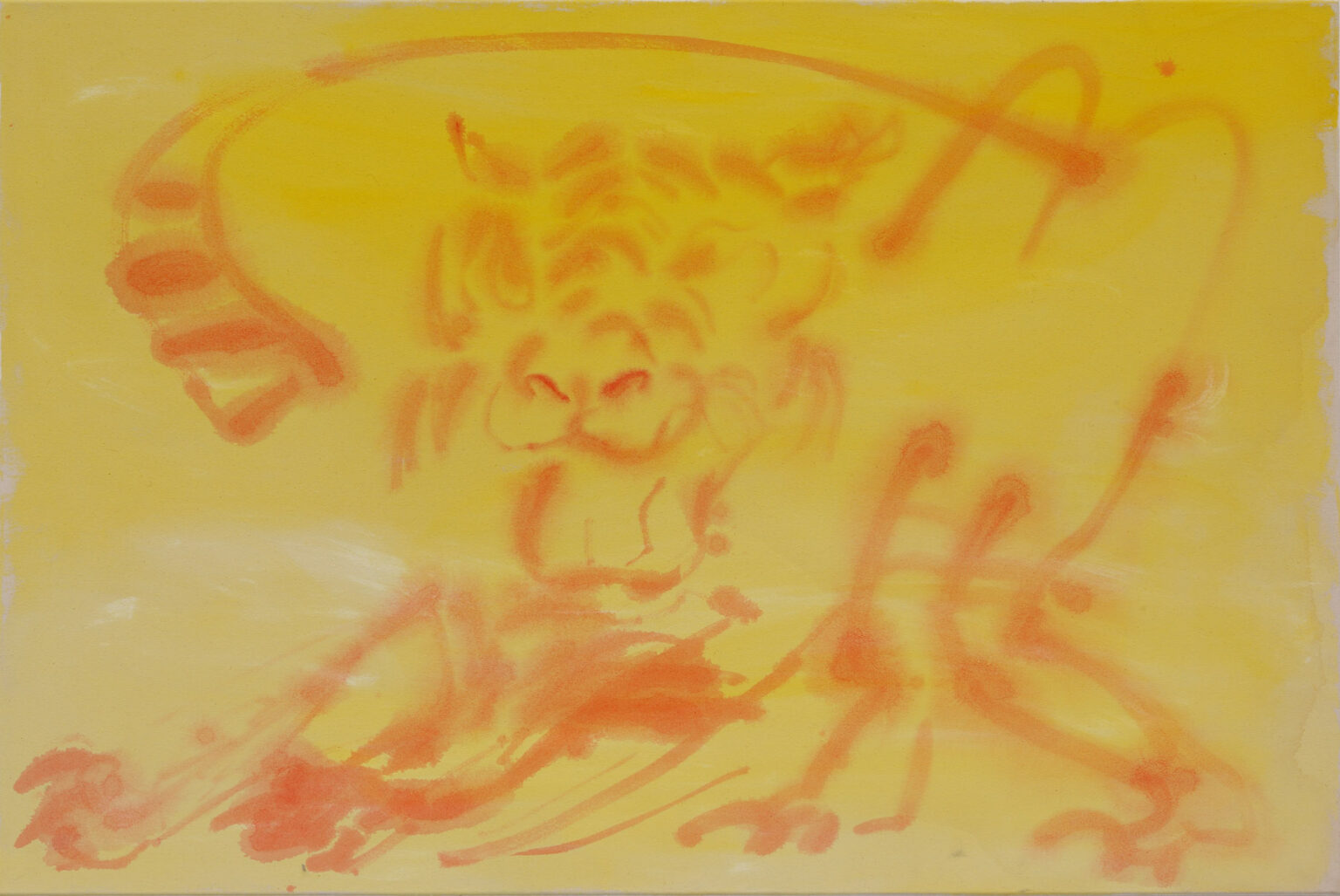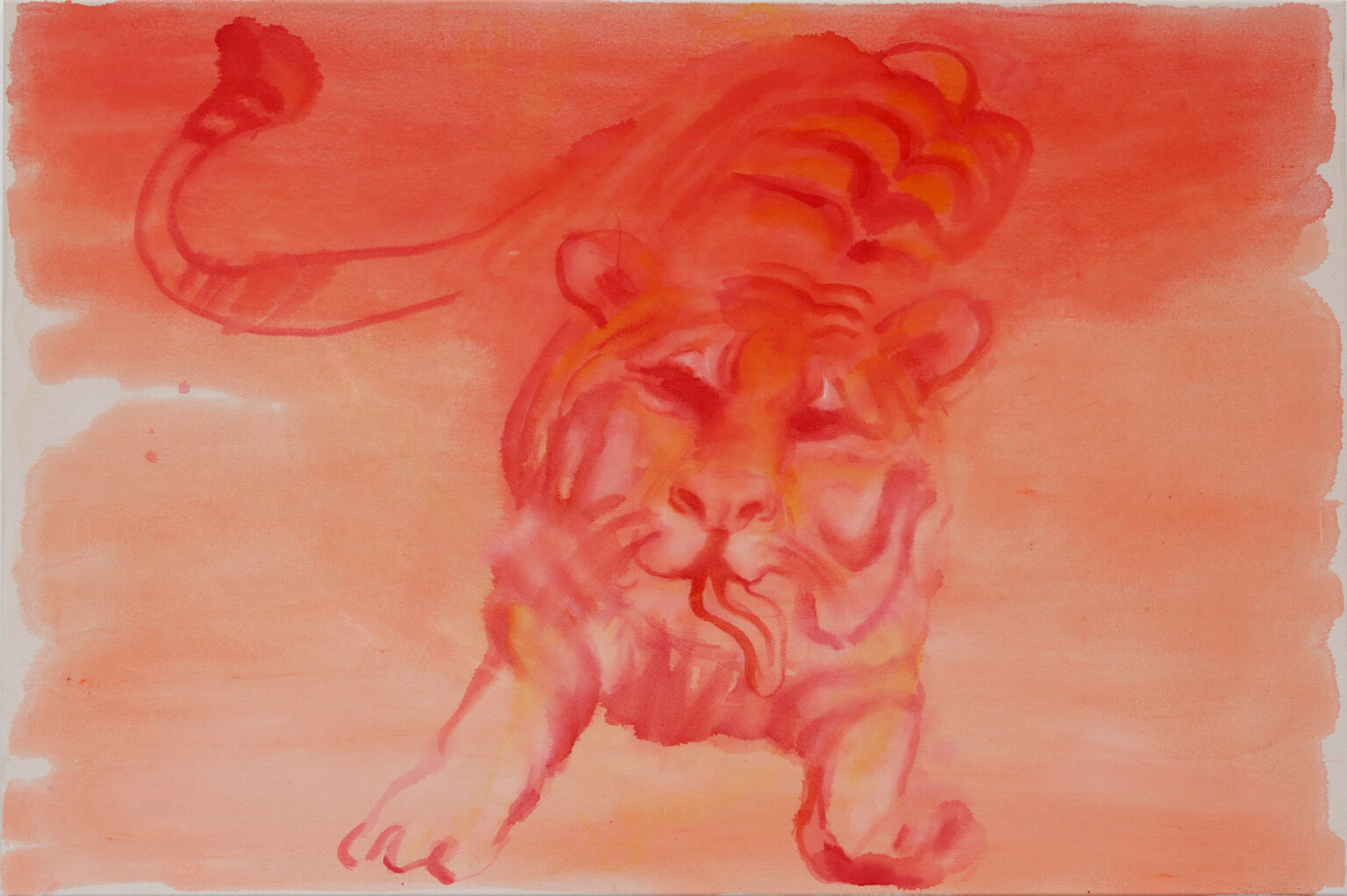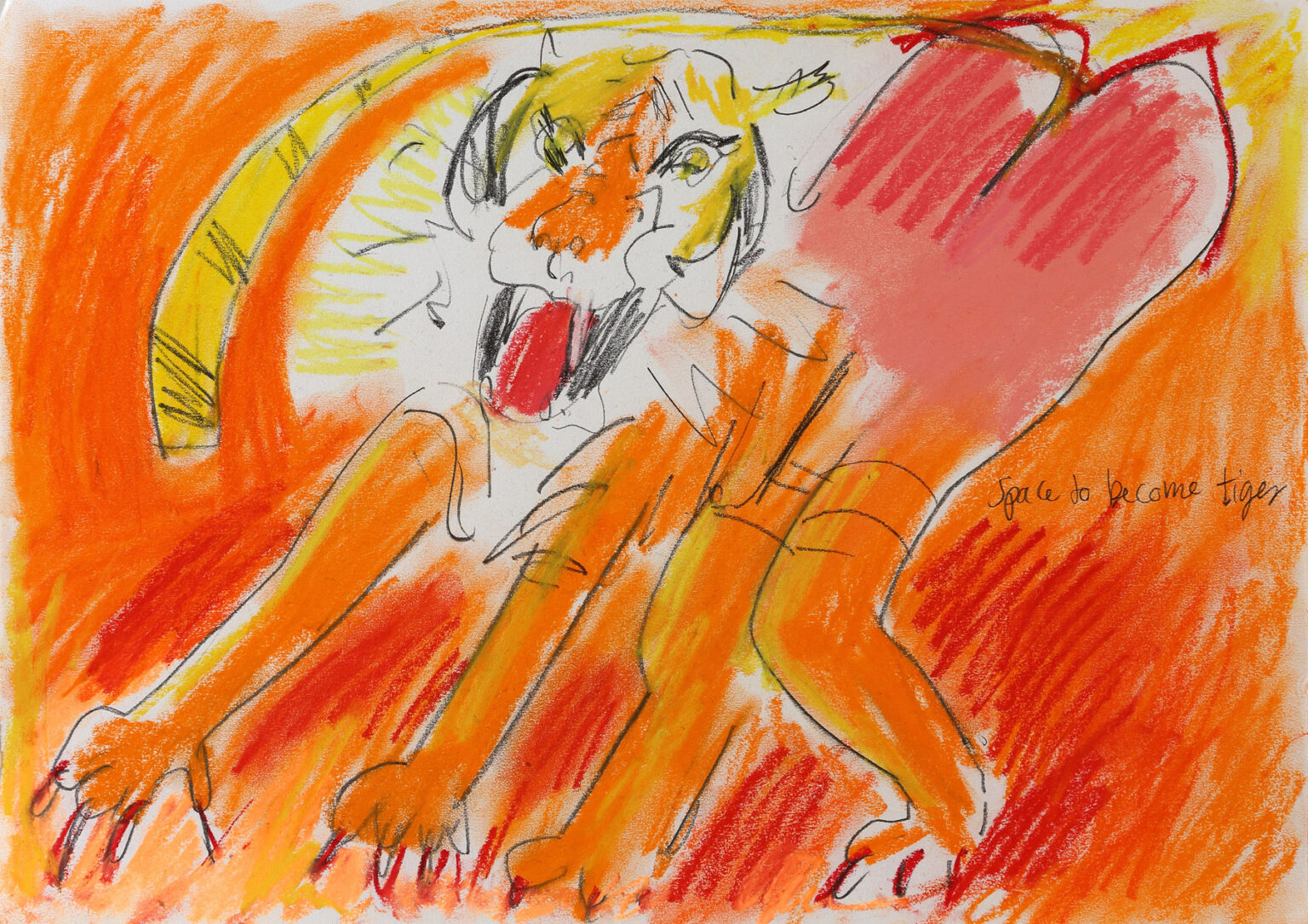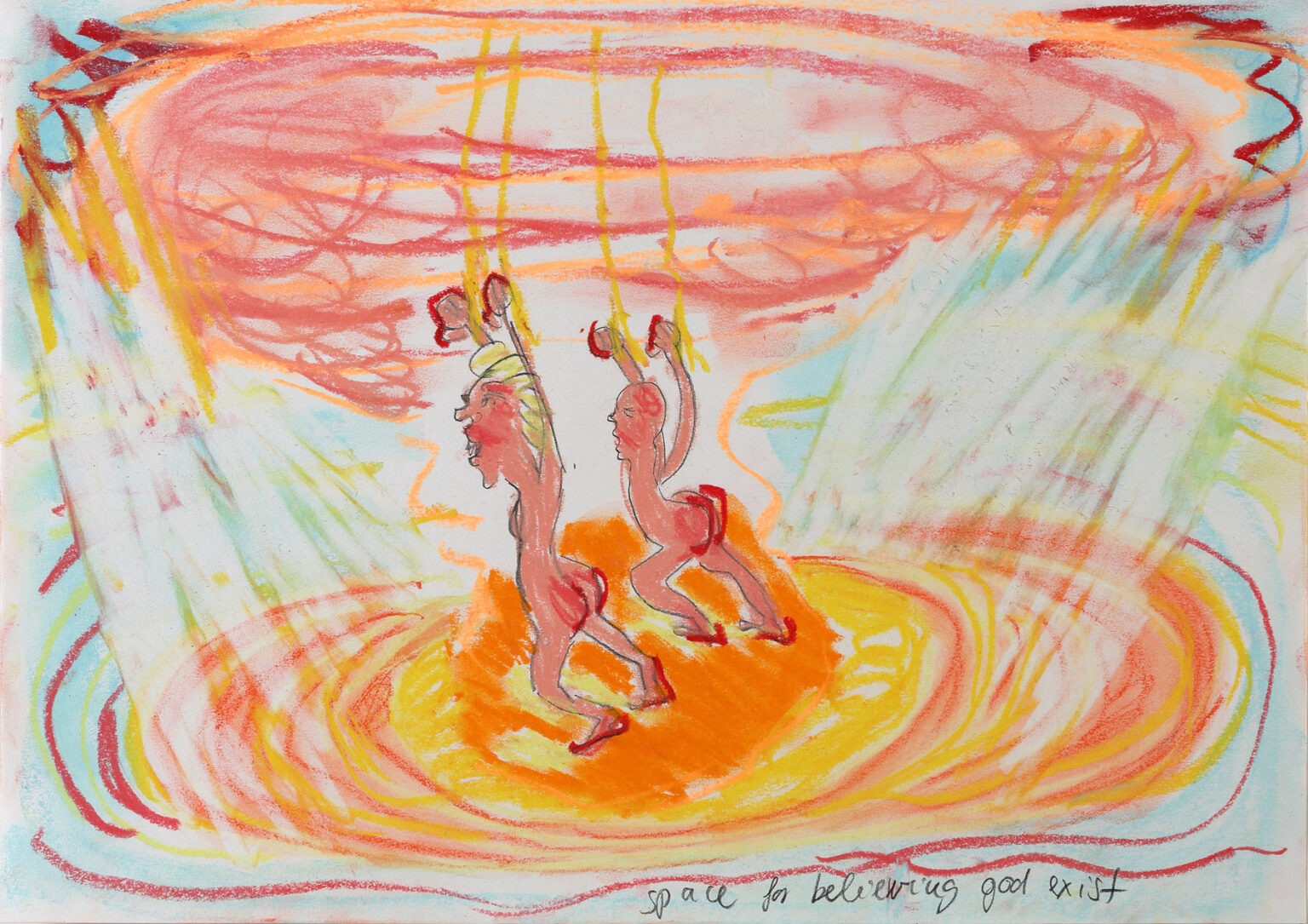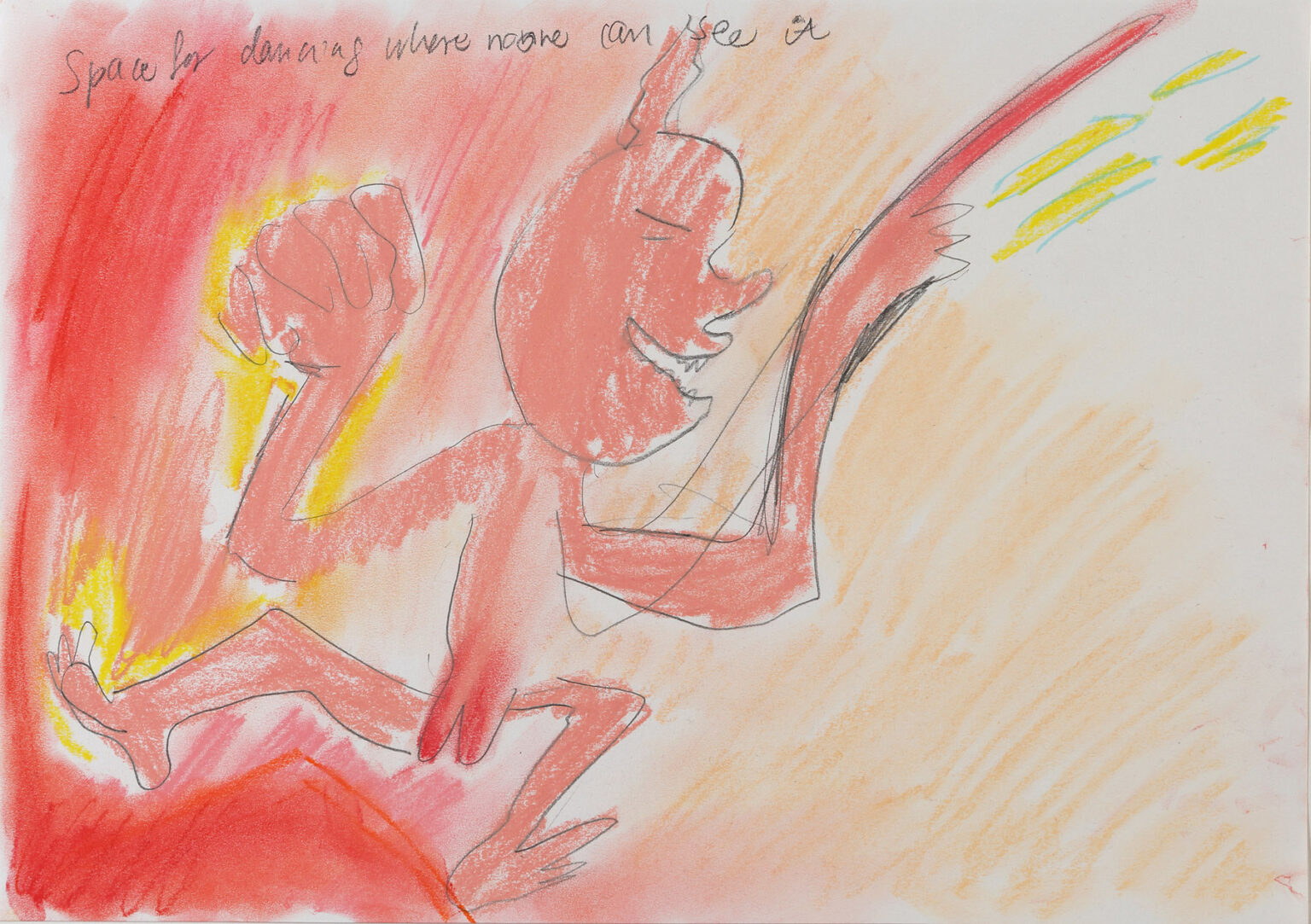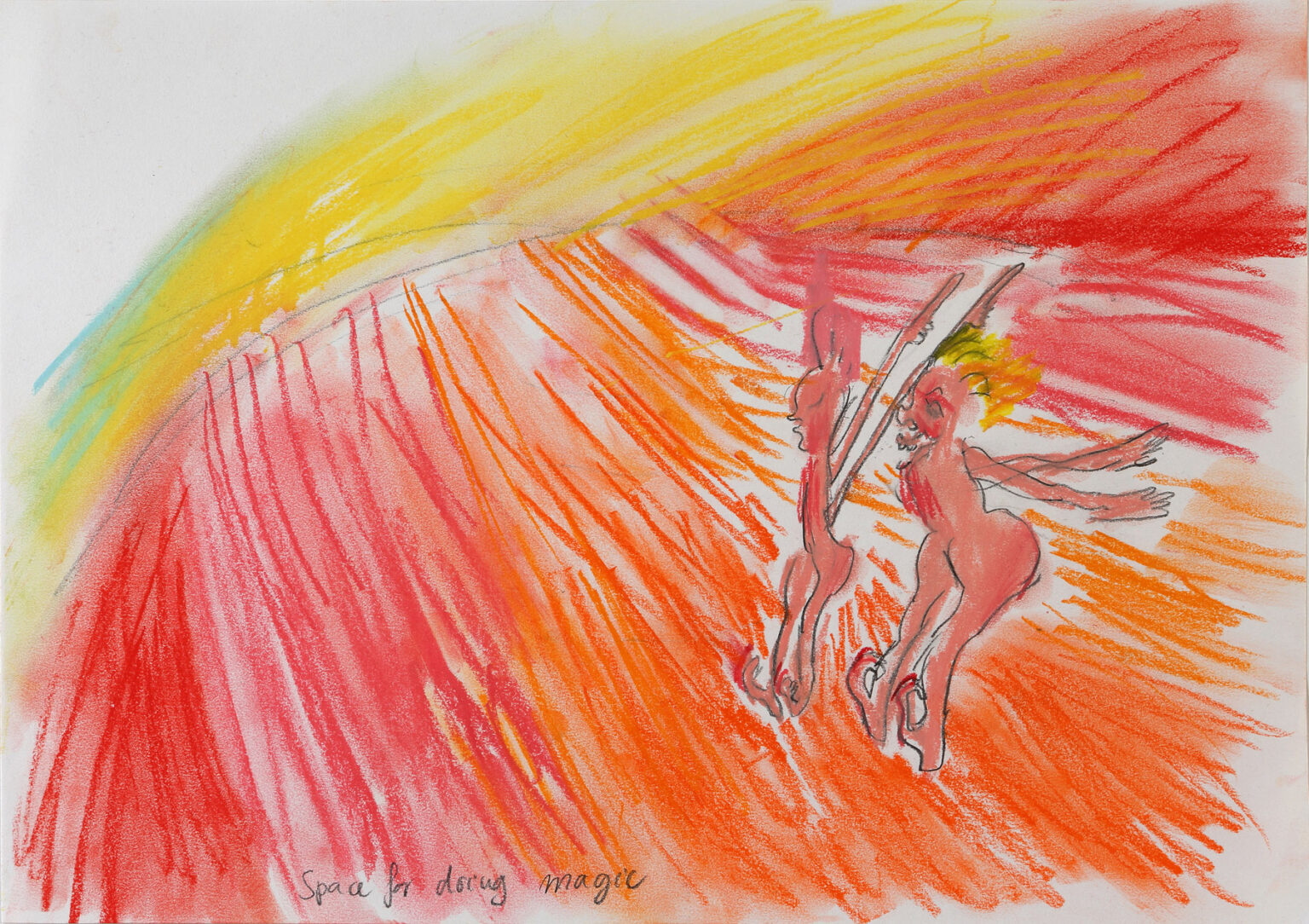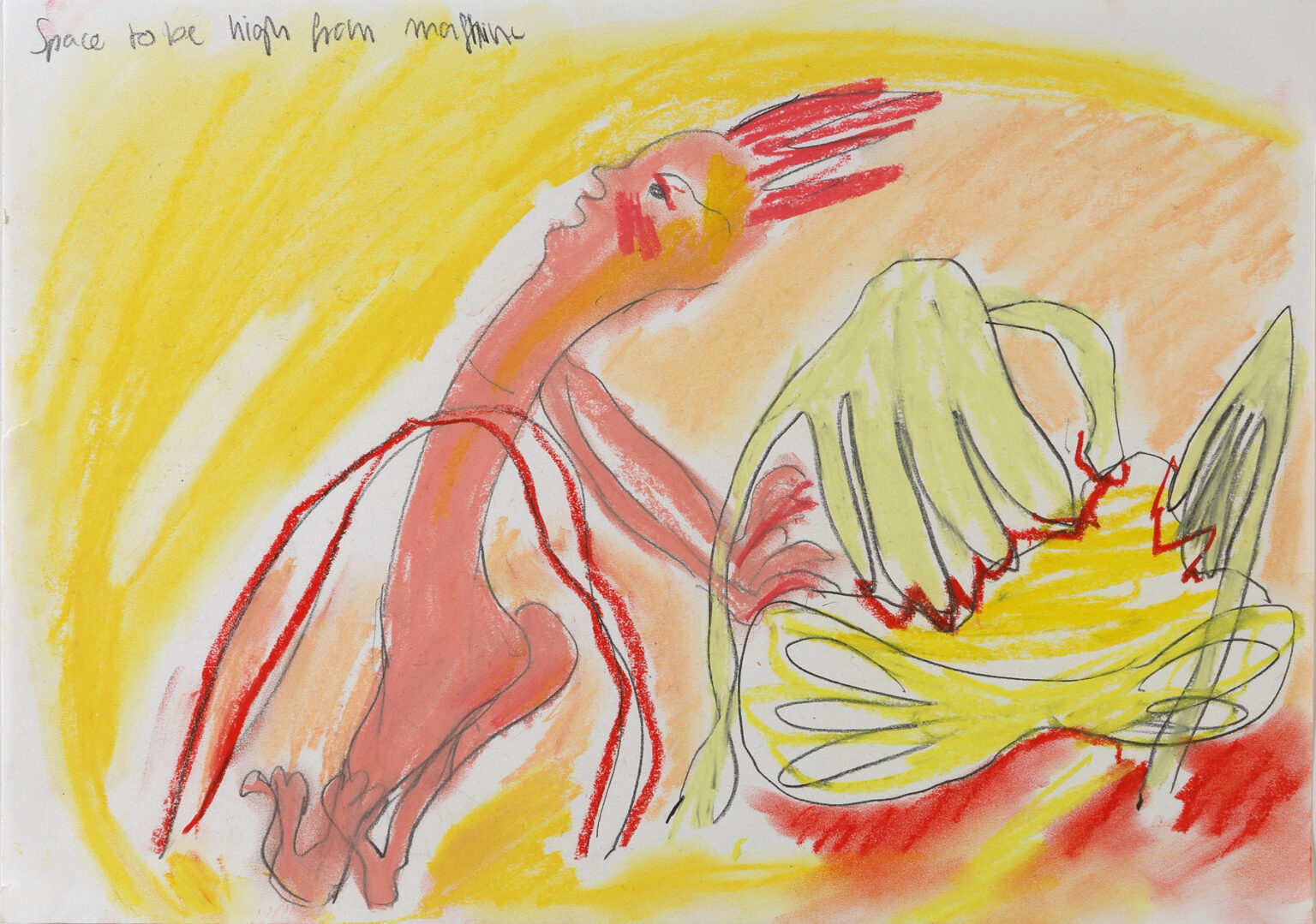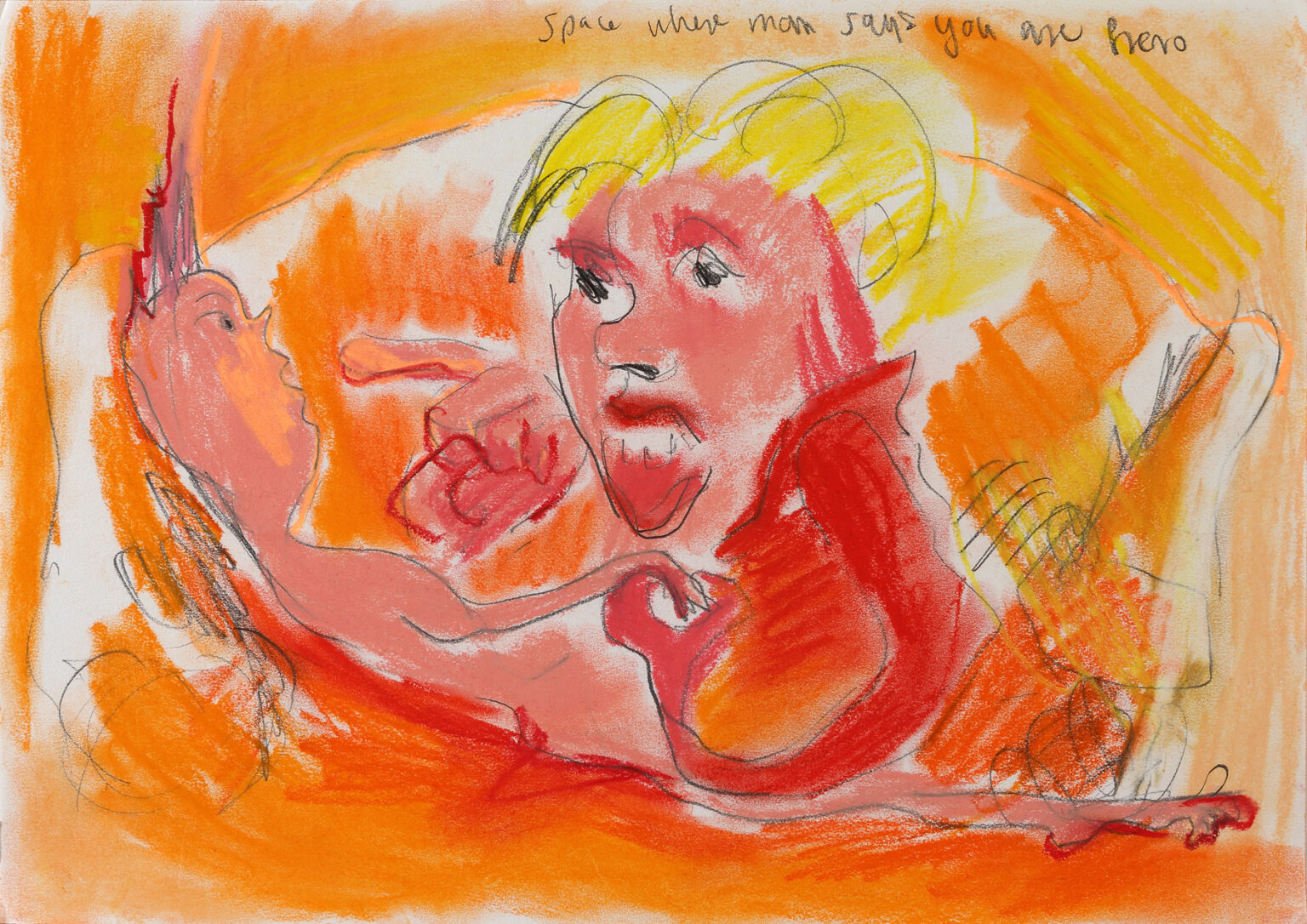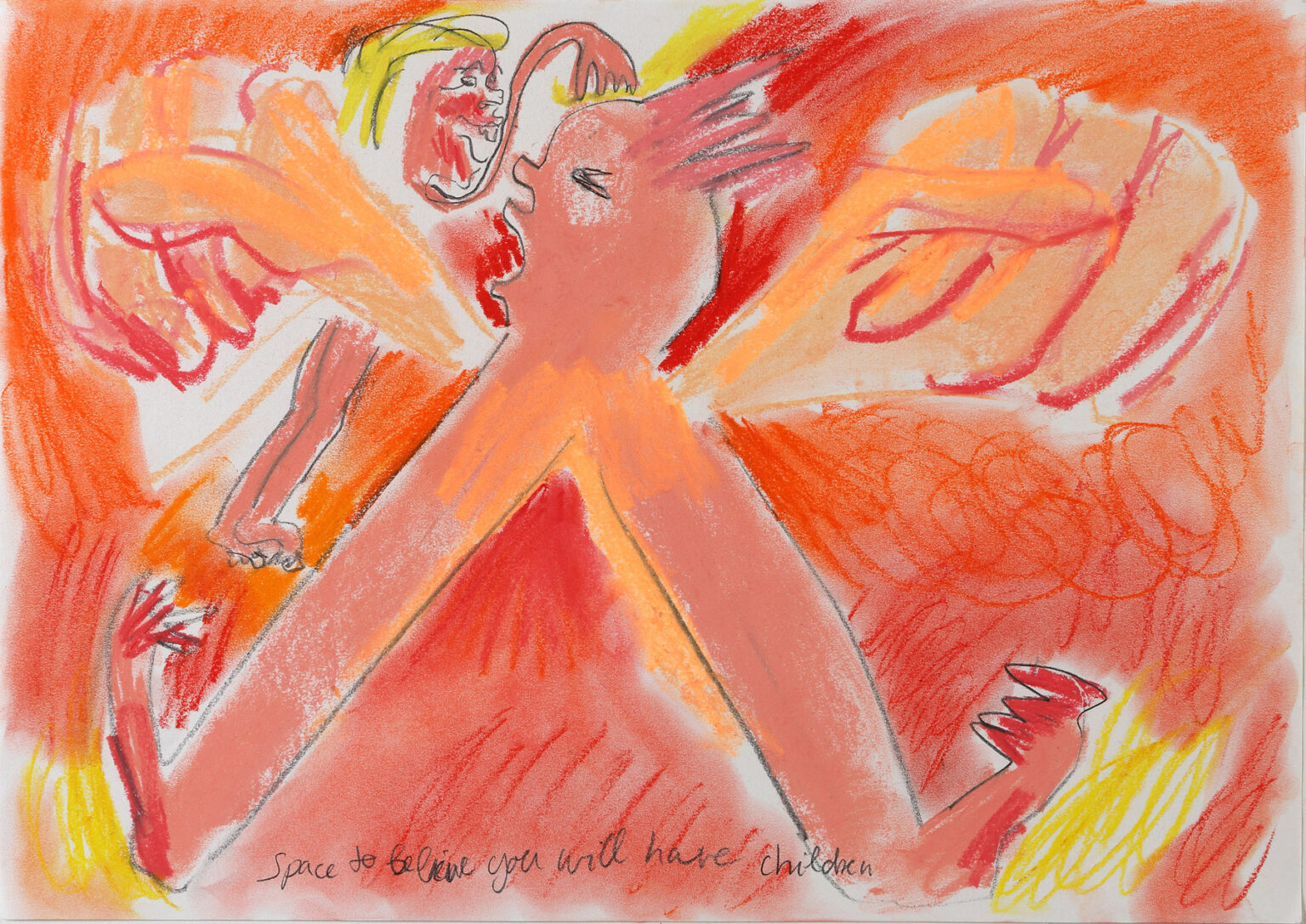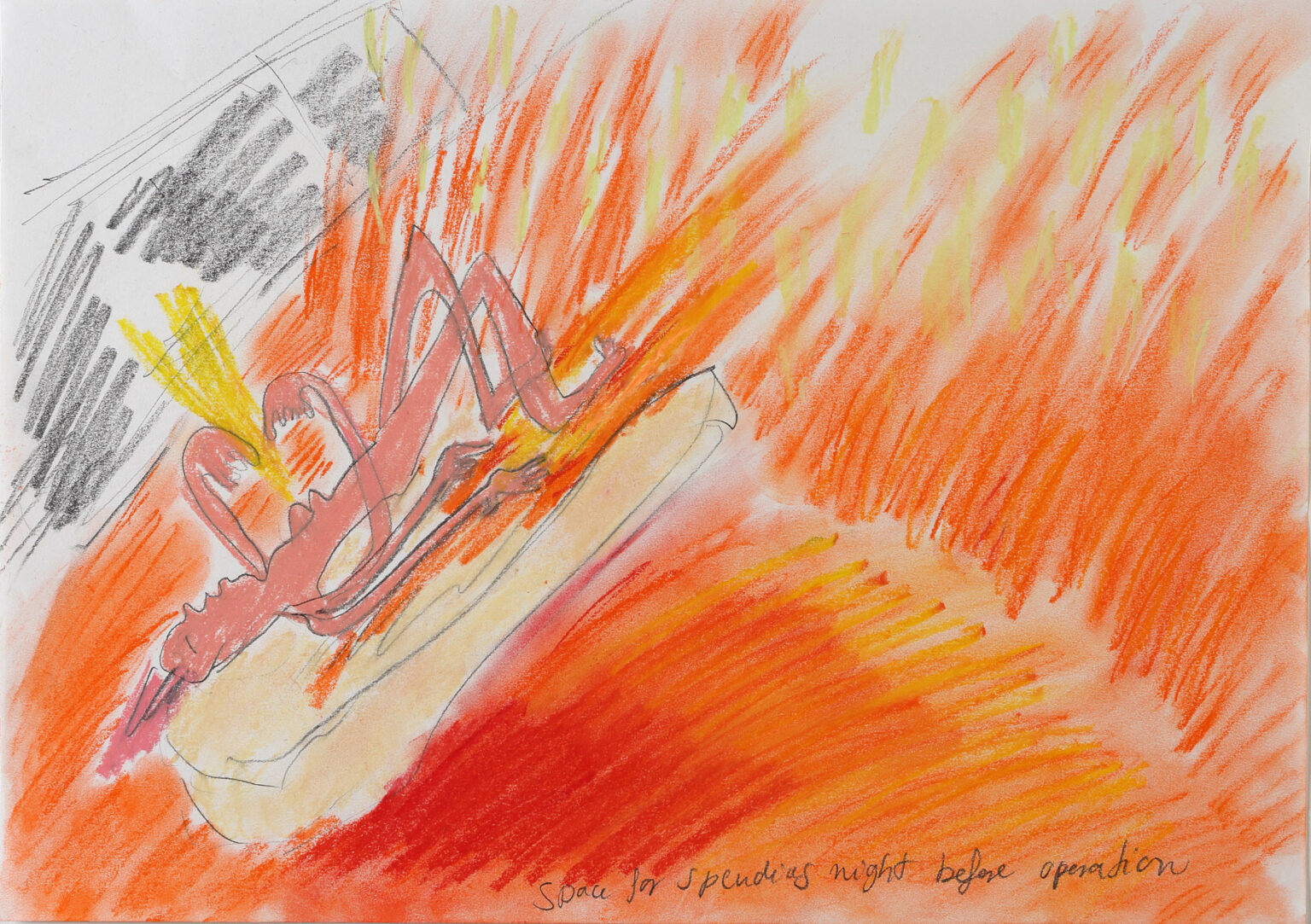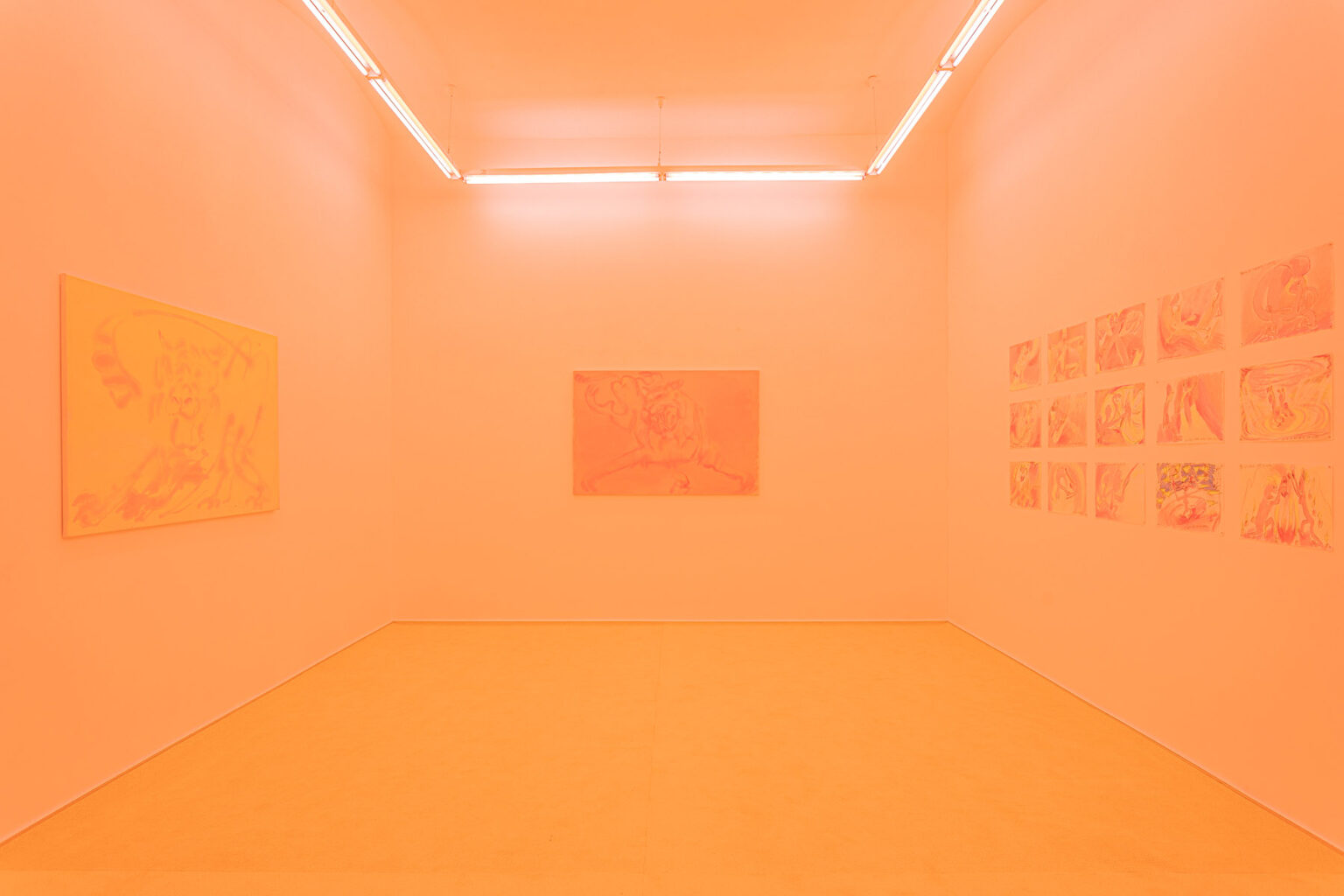Artist: Andrea Éva Győri
Title: Space for dancing where no one sees it
Venue: acb Gallery, Budapest
Photo: all images copyright and courtesy of the artist and acb Gallery, Budapest
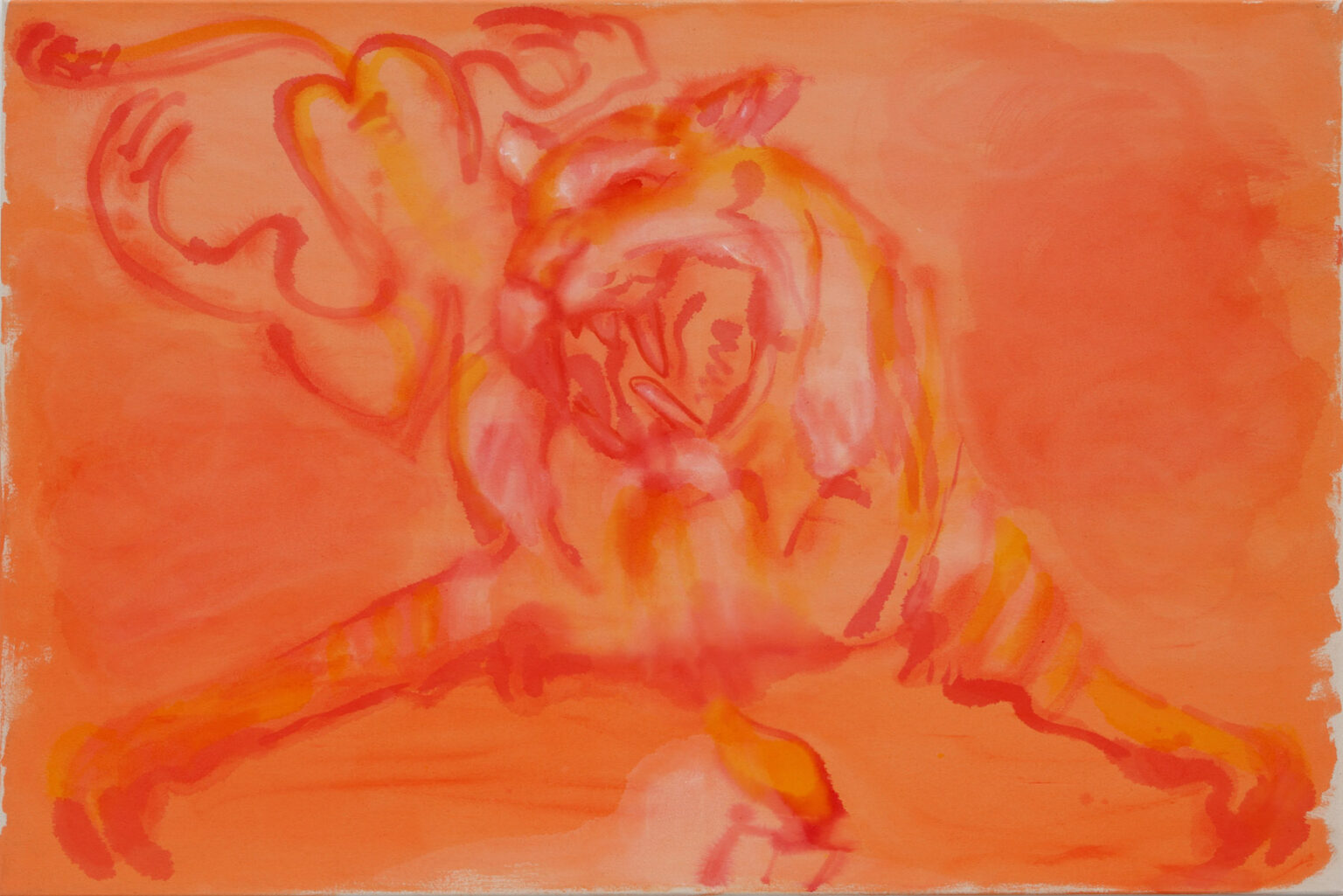
acb presents the first solo exhibition of Andrea Éva Győri with the Gallery.
Andrea Éva Győri (1985) graduated in painting at the Hungarian University of Fine Arts. Although painting still prevails in her oeuvre, in the course of further education and residencies in Stuttgart, South-Korea and Maastricht, her art has matured over the years, with a multimedia approach and the practice of collaborative art gaining more and more emphasis. Captured with a scientific proclivity coupled with free imagination and an expressive formal character, the central theme of her work is the relation of the human body and consciousness, which she delves into through various sub-topics (intimacy, female masturbation or the experience of disease). Since Vibration Highway, a series of drawings about sexuality, her 2016 masterpiece exhibited at Manifesta 11 in Zürich, personal mythology has gained increasing importance in her work: through recurring motifs and self-referential allusions it is perfected into a world where techniques of rite, consciousness and healing have significant roles.
The exhibition on display at acb Attachment gives insight into this stream of consciousness along with the methodology of the artist’s program. The show is centred on the artist’s newest series of drawings exploring the phenomenon and significance of “places”. Places that are more than mere projections of mental states: furnishable and confinable places of personal life events, traumas and hopes. Emotions and internal struggles formulated as locations; intimate arenas of solitude to retreat to, places to dance where no one can see, where one can believe in God, practice sorcery, or turn into a tiger…
Covering an entire wall in the exhibition space, the pastel drawings are pieces of a series the artist started in 2019, and they endow with new features the graphic aesthetic that dominates Győri’s entire oeuvre. Her earlier aquarelle and pencil works were characterized by a strongly two-dimensional manner of representation that coordinated the rendered objects in a sort of “inventory”, depicting them in flattened form; for instance, human figures were stylized into flesh-coloured blobs. This treatment of the image surface had always been accompanied by a neutral field within the image that was understood as a sort of tableau that used the demonstrational techniques of sciences, in which Andrea Éva Győri examined the correlations of corporeal and mental states. In recent years, she has conceived increasingly abstract compositions in these themes and along the logic of reduction and stylization, which also made use of the expressiveness inherent in the medium of aquarelle. In contrast, the pastels presented at acb Attachment are born in an autonomous and saturated space – giving the impression of a more plastic space while also conveying its mystical and spiritual character. Her central figures are similarly stylized, yet not impersonal: they are the very projections of the artist’s own roles, stories and internal world.
Another mediatic innovation in the graphic art of Andrea Éva Győri is the featuring of captions accompanying the images. Although her earlier works had already featured explicative texts accompanying psychosomatic processes as annotations, the titular texts of the series Study on Space stand out with their simplicity. They further increase the complexity arising from the spatial approach of the drawings: for the depicted activities are often related more to temporal experience (like the images before and after surgery, which can be regarded as stage-drawings) than to space. The titles also relativize the difference of exterior and interior space: quotidian spaces may serve as sites of painting or dancing, but a blessing, faith, memory, or a spiritual state can also “take place”. Similarly to Győri’s artistic methodology, which had previously exploited the depictive power of aquarelle blots in modelling excited corporeal and spiritual states, in the Study on Space series, the lines of the chalk pastel give rise to an expressive space composed of force lines or rays of light, often combined with mysticity. The titles and the peculiar landscapes often refer to Győri’s illness and the healing process, her emotions and the adoption of diverse forms of behaviour, the ability to change, but also to previous works and the creative process in a self-reflexive manner.
The cornerstone of the series, at once the central motif of all the other groups of works featured at the exhibition, revolves around the possibility of a radical change: turning into a tiger. Premiered in 2019, Andrea Éva Győri’s performance Space for Becoming a Tiger, along with three paintings, serves to unfold this piece of the pastel series, which thus expands into a subtopic. The symbol of the animal inspires the artist to undergo physical, spiritual and attitudinal change as she attempts to adopt the character traits of the tiger in the course of her performance presented in collaboration with her mother. The magical language of incantation, the hypnotic, spell-like iterations and the invocation of the tiger through movements all serve to help the artist. This therapeutic action resembles Győri’s previous ritual performances staged with her mother, which all served to help her become aware of and cope with the changes of her own body (her hair falling out and the conditions prior to her breast surgery) and endow them with reason. Becoming a tiger carries the promise of achieving a higher existence, a state of awareness, spiritual and corporeal economy, autonomous and stalwart existence. Such powerfully condensed semantics and symbolicity is singular in Győri’s oeuvre, especially as it also channels into the field of interpretation such antecedents preserved in cultural memory and visual tradition, as the poetry of William Blake, the painting of Henri Rousseau and the Chinese cult of the tiger.
Andrea Éva Győri (1985) studied at the Hungarian University of Fine Arts and the Staatliche Akademie der Bildenden Künste in Stuttgart. In 2016 she was featured at MANIFESTA 11 in Zürich. Following her studies at the HONGIK University of Seoul, she was a resident student at Jan Van Eyck Academy in Maasthricht from 2015 until 2017; she is currently on a grant from the Mondriaan Fund. She lives in the Netherlands, her works have been exhibited at various venues, including the Haus der Kunst, Munich, the Vleeshal Center for Contemporary Art, Middelburg, Witte de With, Rotterdam, and Bonnefantenmuseum Maastricht. She was the recipient of the Esterházy Art Award in 2019.

